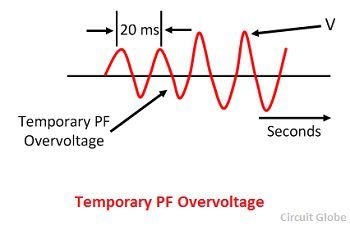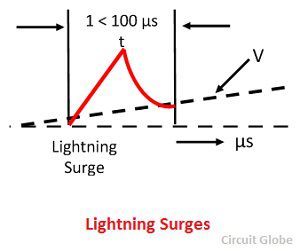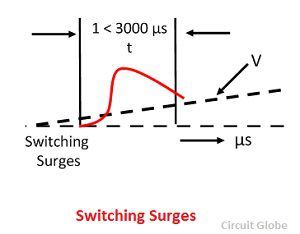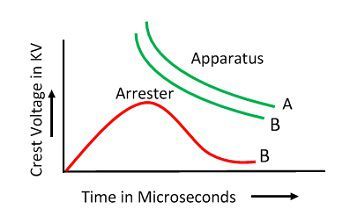Definition: Insulation coordination is the process of knowing the insulation levels of the power system components. In other words, it is the process of determining the insulation strength of the equipment. The internal and external insulation of the electrical equipment is exposed to continuous normal voltage and temporary abnormal voltage.
The equipment insulation is designed in such a manner so that it withstands the highest power frequency system voltage, occasional temporary power frequency overvoltage occasional lightning surges. The equipment of power system has assigned the rated insulation level, and their capability can be approved by applying different types of test.The requirement of insulations is determined by considering the following factors.
1. Highest Power Frequency System Voltage
The AC power network has different nominal power frequency voltage level like 400V, 3.3KV, 6.6k, etc. When the system is lightly loaded the power frequency voltage at the receiving end of the line rises. The equipment of the power system is designed and tested to withstand under highest power frequency system voltage (440 V, 3.6K, 7.2K,etc.) without internal or external insulation failure.
2. Temporary Power Frequency Overvoltages
The temporary overvoltage in the power system can be caused by the load throw off, faults, resonance, etc. Their frequency is about 50 Hz and of lesser peaks, the lesser rate of rising and longer duration (second or even minutes). The protection against temporary power frequency overvoltage is provided by IDMT relay.
The IDMT relay is connected to the secondary of the bus potential transformer and circuit breakers. The relay and circuit breaker takes action within milliseconds and protects the system from temporary over voltage.
3. Transient Overvoltage Surge
The transient over voltage surges in the power system can be caused by lightning, switching, restrikes travelling waves, etc. The surge of the power system has the high peak, high rate of rising and last for a few tens/hundreds of microseconds and are therefore called the transients.This surge can cause spark over voltage and flash over at sharp corners, between phase and earth, at the weakest point, the breakdown of gaseous/liquid/solid insulation, failure of a transformer and rotating electrical machines.
The failure rate due to lightning and switching has been minimised by proper insulation coordination and surge arrester. The several types of protective devices are installed on the network to intercept the lightning strokes and minimise the peak rate of rising of surge reaching the equipment.
4. Withstand Levels of the equipment
The basic insulation level is the reference level expressed in impulse crest voltage with a stranded wave not higher than 1.2/50 μs. The apparatus or equipment should be capable of withstanding test wave above BIL.
Insulation coordination implies the selection of the insulation of equipment with regards to its application to minimise the undesired incident due to voltage stresses (caused by the overvoltage in the system) within the system. Insulation breakdown means the correlation of the insulation breakdown of the various components of a power system to the insulation of the protective devices used for the protection of that equipment against overvoltage.
For the safe operation of the equipment, it should have equal insulation strength equal to or greater than the basic standard insulation level. The protective equipment for a station substation should be chosen to give the insulation good protection corresponding to the working of these levels as economical as possible.





good
great